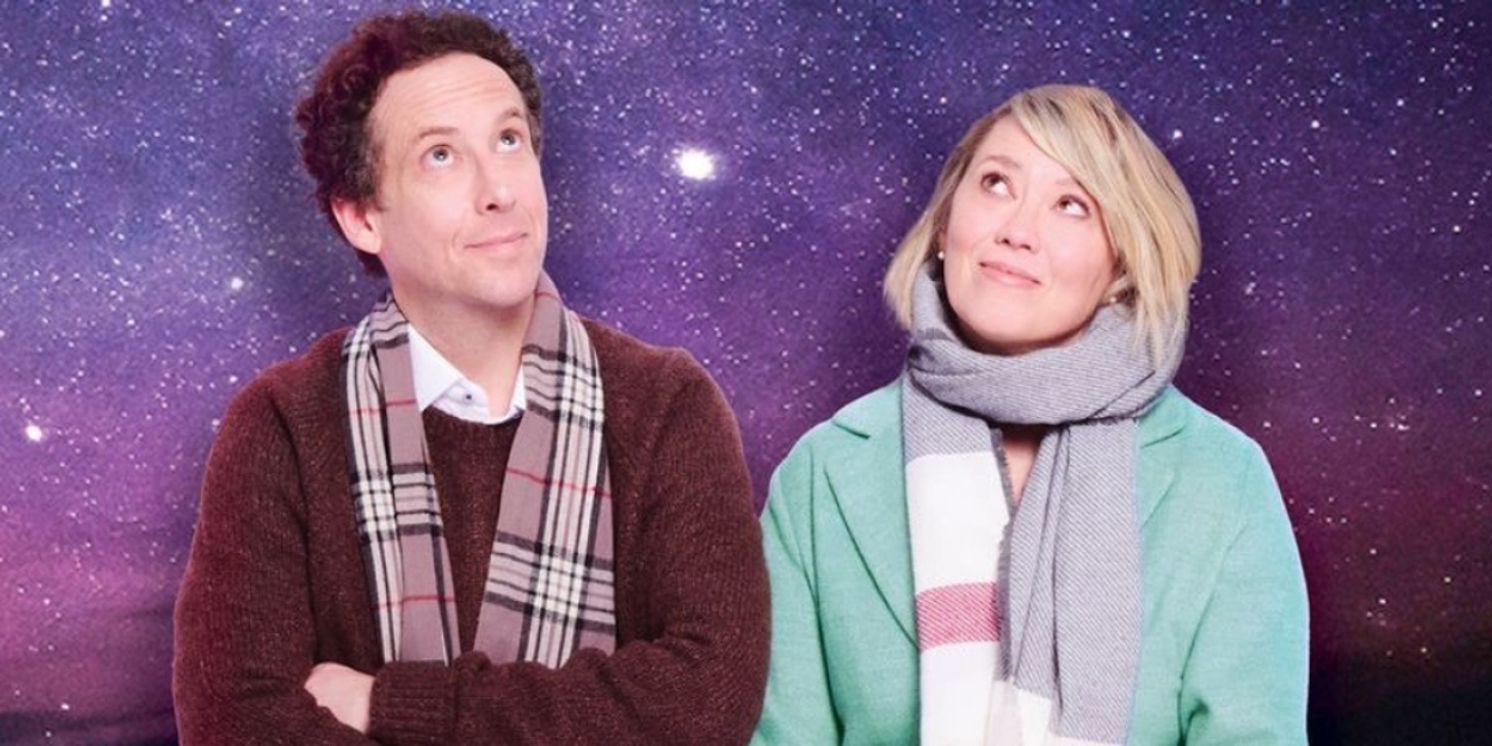Review: BIG STUFF at Streetcar Crowsnest
Baram and Snieckus' latest about the items we hold dear is a keeper

I have too much stuff. You probably do, too. The detritus of our lives, stuff multiplies, sometimes seemingly of its own accord. Whether it’s in the form of appliances, arts and crafts, furniture, tchotchkes or literal pieces of junk, the perniciousness of stuff lies in its emotional charge, stemming from the way we associate it with the important people and moments in our lives. Matt Baram and Naomi Snieckus, a Second City comedy duo who are also married in real life, present a funny and meaningful meditation about what our things mean to us in BIG STUFF, using anecdotes and gentle audience participation to commune over the items we just can’t bring ourselves to toss.
Entering director/co-creator Kat Sandler’s production in the Crow’s Theatre studio space, one finds a wall of storage boxes piled high with some loose articles tantalizingly peeking out, courtesy of set designer Michelle Tracey. Baram and Snieckus will pull out and explain the importance of several of these items, such as multiple toasters, a Second City hat, and an enormous, incomprehensible collage, while others, such as an antique camera, a packet of letters, and even meta miniature replicas of the chairs the comedians sit in during the show, leave their stories to the imagination.
A note card on each seat invites audience members to become part of the story as well by sharing an item of personal significance, which the consummate improvisers draw at random to incorporate into their work, as if each suggestion is another item on the pile of mementos.
While they do understandably include improv –because, aided by improvisation consultant Rebecca Northan, they’re terrific at it, and because, as they show us, it’s a foundational aspect of the way they live their lives – Baram and Snieckus have created a tight story-based show with solid bones (or boxes), framed by an incident in which they inch forward at the US-Canada border in a truck full of a questionable inheritance of stuff from their deceased parents.
With warmth and easy familiarity, the pair trade loving barbs the way only a long-time married couple can, provoking laughs of recognition by cataloguing their differences. He’s logical, she’s emotional. He’s a pessimist and fan of the worst-case scenario, she’s an optimist who believes everything will work out. He’s a thrower, believing that items are only as valuable as their utility, and she’s a keeper, believing that items are gateways to memories. While some of the marital squabbling is well-worn comedic territory, the unique spin furnished by the show’s main theme means that these jokes aren’t the full focus, so they never get tiresome.
Instead, when Baram and Snieckus aren’t poking fun at each other, they provide us small, bookended windows into dealing with hopeful beginnings and grief-filled endings, using the stuff from these moments as touchstones to hold on to the feelings they capture and the people no longer with them. They gradually describe the loss of each of their parents in turn, from Matt’s mother in Edmonton, who refused to make left turns but introduced her son to the wonders of changes in atmospheric pressure while travelling, to Naomi’s father, a Lithuanian scientist who told his daughter stories every night of brave and smart little girls. As they reveal their families’ discarded things, we see those things and the people who keep them become reflections of the parents they grieve. The deeply personal reminiscences are touching, but never without humour regarding their parents’ foibles and in recognizing their own.
Each moment involves one or more specific items, whose fate the audience is asked to decide: keep, or relegate to the “dump box”? While you’d think it would be easy to be more ruthless about someone else’s stuff, especially given the pile in the background, once these detailed and comic yet wrenching stories are attached to the items, it’s hard to throw anything away.
If stuff is more than the sum of its physical parts, BIG STUFF is more than just the sum of its stories and set. The audience participation, probably extra high-quality on opening night, given the assortment of theatre professionals, is expertly, warmly guided to the level of the participant’s comfort. By inviting the audience to share, the BIG STUFF team also allows us to feel our big feelings, invoking a sense of community that includes not only their stories, but our own. A scene where Naomi decorates for the holidays with even more of the note cards indicates we’re making something beautiful together, even as we create more stuff.
We may all be fighting a losing battle against stuff; as meaningful as our things can be, Matt has a point when he asks whether anyone really needs more toasters than fingers on one hand. But in reminding us that our relationship with material items can be even more complex and metaphorical than we consciously realize, BIG STUFF proves it’s a keeper.
Image of Matt Baram and Naomi Snieckus by David Leyes
Reader Reviews
Videos

